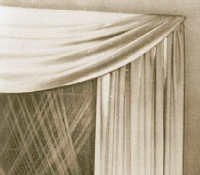 |
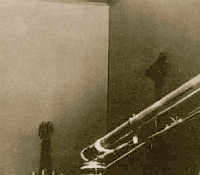 |
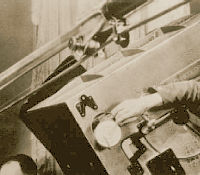 |
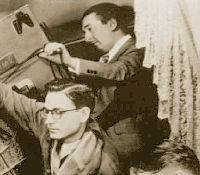 |
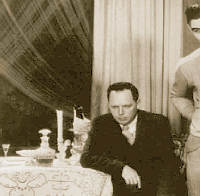 |
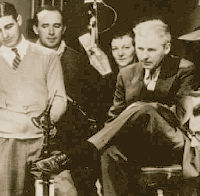 |
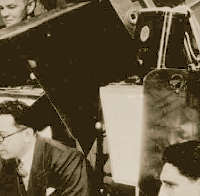 |
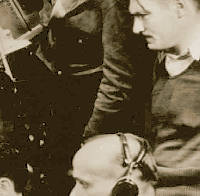 |
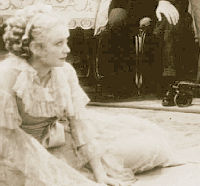 |
 |
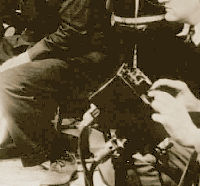 |
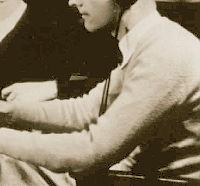 |

 |
 |
 |
 |
 |
 |
 |
 |
 |
 |
 |
 |
Becky Sharp went before the Technicolor cameras in December of 1934. The untimely death of its original director, Lowell Sherman, a month later, caused the picture to be restarted when Rouben Mamoulian took over the megaphone. Using Kodak panchromatic film which had an equivalent rating of approximately ASA 5 after the light passed through filters and beam splitters, photography required terrific amounts of light. Seen above is the beautiful Miriam Hopkins on the floor, Director of Photography, Ray Rennahan (a Technicolor icon) sitting on the stool with legs crossed, and Director Mamoulian, appearing to be incubating his eggs while sitting on a light in front of the camera. And, yes, that's a camera in its sound blimp, not a refrigerator. With the intense light levels required, most likely the crew would have appreciated a nearby refrigerator. Considering the clothing being worn, the stage must have been kept a bit frigid. Becky Sharp is discussed a bit more, later in this section.
A number of slight variations to the printing of Technicolor films were used over the years. Described here is the typical method used through 1945. The illustrations are based on a frame from Becky Sharp (1935) and were adapted from positive copies of the three color records as shown in the November, 1984 American Cinematographer article on the restoration of the film by Robert Gitt and Richard Dayton. - Recommended reading.
Three negatives from Technicolor camera 
Receiver Film
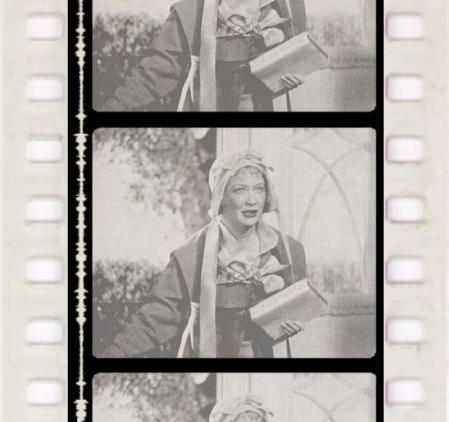
The production of prints began with a "blank" receiver film, which was a black and white stock coated with chemicals called "dye mordants". The function of a mordant is to attract and hold color dyes so that they do not spread or bleed during the high pressure dye application. The "blank" had the soundtrack, black frame lines, and a 50% density copy of the green component exposed to it, (oddly, in the case of Becky Sharp, film restorers Gitt and Dayton discovered that the blue record had been used for the "key").
The efforts involved in creating the "blank receiver" offered several benefits over other methods of producing prints. Being a black and white stock, the soundtrack could be optimized for the best reproduction, which was not possible with dye soundtracks such as were used on Cinecolor and other inferior processes. Technicolor's sound track was even considered superior to that of conventional black and white films in which variations in producing the picture would effect the nature of the sound. Avid fans of old black and white Warner Bros. and MGM films, in particular, can easily see that each studio's product had a distinctive look and sound. The black framelines covered the edges of the printed dye images so that variations in the actual component size were not visible. And the 50% black and white "key" image improved contrast and increased the apparent sharpness of the photography.
Printing Matrices - Step One
The three printing matrices begin life looking like conventional black and white films with slightly odd tones. The negatives are printed to the matrix stock and then the silver image is washed from the resulting print. This leaves a gelatin "topographical map" impression of the color content in each matrix. The gelatin is transparent and the image is nearly invisible.
Printing Matrices - Step Two
Each matrix is coated with a complimentary color dye, the red matrix using cyan, the green using magenta, and the blue using yellow. One at a time the matrices are brought into contact, under high pressure, with the prepared receiver film and the dye is transferred to the receiver. With each successive step the color image takes form on the final print. The depth of the gelatin impression is exaggerated for the sake of illustration.
The final print, which requires an accuracy of
registration of 8/10,000 of an inch or better.
Miriam Hopkins as Becky Sharp in Glorious Technicolor, about to throw a hissy-fit and a bible.
This is the scene being photographed at the top of this page.Despite the fact that all two-color systems used red and some variation on green, they were not capable of delivering a genuine red on the screen. Becky Sharp provided lots of opportunities to see brilliant reds in addition to the new blue.
And finally blondes were seen as blondes and not some sort of salmon color that really didn't quite cut it.Frames reproduced from a surviving original Technicolor trailer. Courtesy of Jeff Joseph Next 3-Strip Camera
You are on page 6 of the Technicolor History
You may jump to any other page
RETURN TO OLD COLOR HOME PAGE
©1999-2003 The American WideScreen Museum
Photographic and printing process illustrations ©1999-2003 AWSM - All Rights Reserved